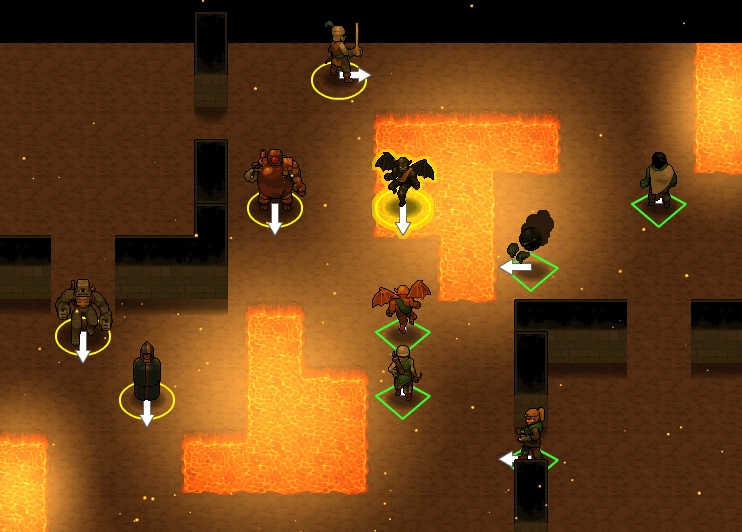Upload Your ResumeEmployers want candidates like you. Upload your resume. Show them you're awesome.
Becoming a “Promotional Machine”
Despite Stern’s first campaign falling short, he had several things going his way from the start. Stern had made seven previous games, though none as ambitious as Telepath Tactics, and he runs a local indie game developer meetup group, allowing him to pick the brains of people who had used Kickstarter before. Stern prepared extensively for that first Kickstarter, hiring a professional videographer to make a pitch video with gameplay footage and reaching out to journalists to get coverage. “I knew I would be essentially vanishing off the face of the earth for 30 days. I would exist only on the Internet as a promotional machine,” he said. The 840 backers from the first campaign proved crucial in the second. “I was able to rally the troops I accrued over the first campaign to throw money at it all at once over the first few days,” he said. He also purchased a booth at the PAX East conference for $3,000 to promote the Kickstarter, and edited the pitch video to make it shorter and more effective. The early boost in funding may have helped Telepath Tactics get more prominently featured on the Kickstarter website. More than half of the money he accrued in his successful campaign “came from people who were just browsing the site, Kickstarter.com, which if you think about it is kind of enormous, given all the different avenues I was pursuing publicity in,” he said. When reached for comment, a Kickstarter spokesperson suggested the company cannot provide statistics on how many projects succeed the second time, but said, “Anecdotally we do see that many creators who had trouble the first time around will lower their funding goal, shorten their project duration, rethink their presentation, or all of the above, and then relaunch. That's often a path to success.” The spokesperson pointed to the “Coolest Cooler” project, which fell short of a $125,000 goal and then hit more than $9 million on a second try. Besides keeping drinks cold, the cooler blends icy drinks, charges phones, and plays music. Stern is also not alone among video game developers. Henry Smith’s Spaceteam Admiral’s Club Kickstarter fell more than $15,000 short of its $80,000 goal earlier this year, but he re-launched the project and hit the goal with $83,235 in July. In a blog post, Smith wrote that “existing momentum combined with more aggressive outreach” helped the second time. Smith already had a hit with Spaceteam, a party game released in 2012 that involves players shouting nonsensical “technobabble” at each other while a virtual spaceship disintegrates. Smith held a big Spaceteam tournament in June this year to promote his second Kickstarter. Launching a fresh Kickstarter isn’t the only option, as we wrote in a previous article. Erin Reynolds, creator of a horror adventure game called Nevermind, fell short of her crowdfunding goal but ended up getting money from Intel to bring the game to a future version of the company’s RealSense 3D Camera.Preserving Creative Freedom, Without Going Broke
Stern said he could have attempted to find a publisher for Telepath Tactics, but didn’t want to sacrifice any creative freedom. Self-funding wasn’t a great option, either, since Stern works a day job while developing on the side. “I don’t have that big of an income and that would have had some consequences for the game,” he said. “I really wanted to make the best, most professional game that I could. I decided I would give Kickstarter one more try.” Kickstarter charges a 5 percent commission, but developers don’t have to pay unless their projects get funded, so there was little harm in trying again. As it turned out, the surprisingly large amount collected in the second Kickstarter allowed Stern to take a few months off work and spend eight hours a day developing the game. Early backers have enjoyed access to the game for months—and newcomers can buy access now for $25—although it isn’t quite done. Stern missed the April 2014 estimated delivery date for the final product, but that was largely because of added work created by the stretch goals. “Kickstarter makes you pick an estimated delivery date for your rewards when you first create the campaign, but it doesn’t let you edit it if you then hit like five stretch goals,” Stern said. The stretch goals added new coding demands and time to commission art: “Right now, I am planning to have it finished around the end of this year and release it in early 2015.” When asked if the whole process was worth it, Stern immediately said, “Oh, absolutely. It was very helpful from almost every conceivable perspective. It got word of the game out there, it gave the game an actual budget. It will be much more polished than if I hadn’t run the campaign.” Perhaps most beneficial is the “great mailing list of people who are really into the game, who are going to be fans going forward,” he added. “Even if I hadn’t gotten the money that probably would have been worth the effort of running the campaign all on its own.”Related Articles
- The Trials and Triumphs of Creating Your Own Game Studio
- Is Mobile Game Development Worth the Effort?
- How Kickstarter Upended the Gaming Industry


